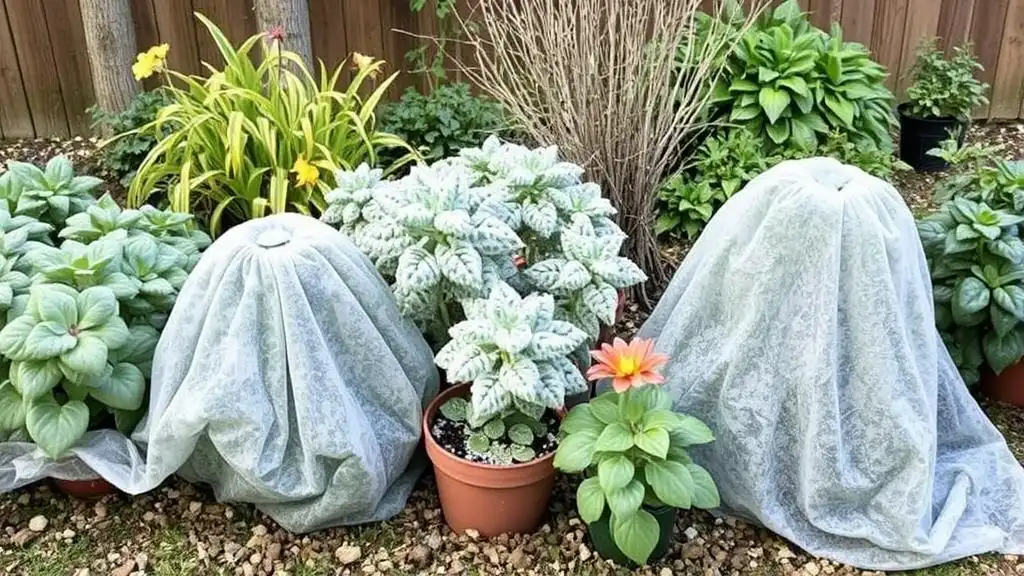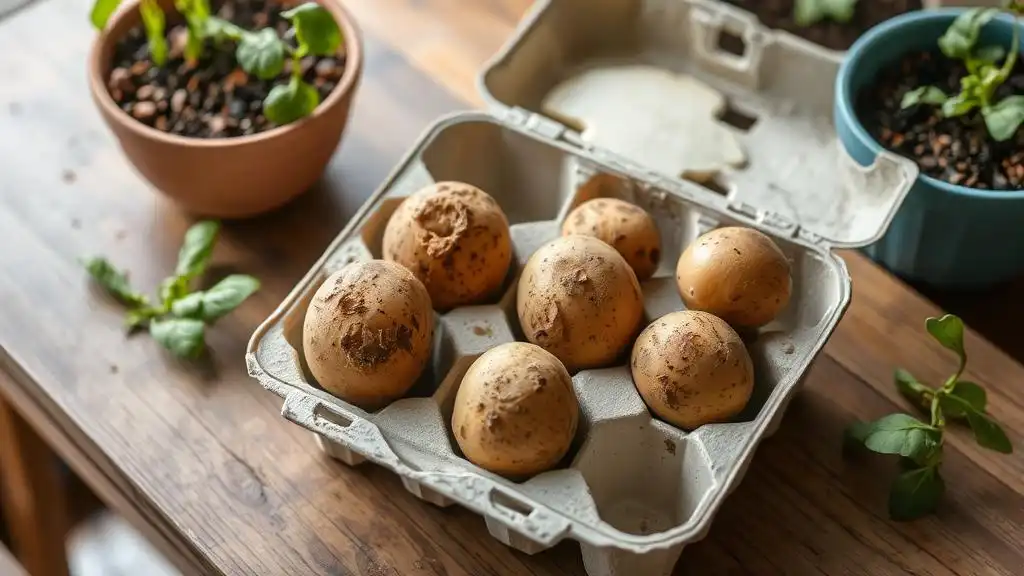When Temperature Drops: Protecting Your Plants from Freezing

Gardening is a year-round experience, though the active stage usually covers spring and summertime. For many floral inhabitants, the dormant season, i.e., winter, is an essential phase, during which plants may undergo physiological changes while preparing for the next growth cycle and proper development with renewed vigor.
Contents:
Gardening is a year-round experience, though the active stage usually covers spring and summertime. For many floral inhabitants, the dormant season, i.e., winter, is an essential phase, during which plants may undergo physiological changes while preparing for the next growth cycle and proper development with renewed vigor.
Nevertheless, some natural creations require additional support in order to get through this period unscathed. What temperature do plants freeze? How to protect them properly and let them thrive in the upcoming growing season?

At What Temperature Do Plants Freeze: When and Why?
Like the majority of living organisms on our planet, plants may grow and develop when put under certain conditions, and temperature levels play an important role. In general, plants freeze at what temperature liquid turns into ice, i.e., between 28°F (-2°C) and 32°F (0°C). Ice crystals, formed in the plant’s cells and the extracellular spaces, damage membranes and disrupt its structure in the end.
Some types of greenery, however, may potentially withstand colder environments, which is basically an exception rather than a common fashion.
When Do Plants Freeze?
The timing of when plants may freeze depends on several factors like peculiarities of a climate, plant type, and support provided by a gardener as well. As a rule, when the air temperature drops to 32°F (0°C) or below and remains unchanged for more than 5 hours, plants may freeze, though the short-term temperature fluctuations may sometimes not pose threats to the plant's health at all.
Early frost usually occurs in late fall or early winter, but some climates still presuppose different timings, ranging from mid-fall to mid-winter, too. Besides, when spring arrives, the first warmth can be misleading, for occasional colder weather may return and harm plants once more.
Understanding Critical Temperature Ranges
For Tender Plants: As soon as the temperature falls to freezing point, i.e., 32°F (0°C) to 30°F (-1°C), there are instantly formed ice crystals that cause immediate tissue damage to tender plants like tomatoes and basil, for example. These always need extra protection so as to make it through winter and enter a new life cycle again.
For Semi-Hardy Plants: Lettuce and peas, representatives of the semi-hardy plants, might survive during brief dips below freezing. However, when exposed to prolonged cold of 30°F (-1°C) to 28°F (-2°C), ice formation will inevitably cause dehydration of cells and obvious death of a plant.
For Hardy and Very Hardy Plants: No matter how hardy a plant may be, frost spares no one. While plants like broccoli, carrots, and woody perennials possess special mechanisms to endure colder conditions, the temperature of 28°F (-2°C) to 25°F (-4°C) is devastating, not to mention more sensitive vegetation.
How Do We Explore the Needs of the Garden?
Since most gardens incorporate numerous plant species of different natures in the same space, it is important to acknowledge their needs and create suitable conditions for them to grow and thrive efficiently. You may be questioning, what temp do plants freeze? The easiest way to obtain this information and keep it accessible whenever you need is to use plant ID apps like AI Plant Finder.
AI Plant Finder serves as your own plant log, gardening assistant, and social media for plant lovers of all sorts. What the app offers usually includes plant and disease identification, swift plant care reminders, AI guidance, and calculations for water and illuminance requirements, along with determining current light levels with the use of your smartphone’s camera only.
So as to get details regarding your plant’s need, type in its common/scientific name in the search bar or use the "Plant ID" feature to quickly identify the species by photo. Hence, you will then be redirected to the plant's card, which provides information about its habitat, general care requirements, toxicity levels, edibility potential, and temperature ranges. Understand your plants' needs and protect their health on time.

Frost-Protection Strategies
Want to enjoy your garden more than once? Wish to create a lush yet healthy space for flora to appear in all its glory? Then, protecting plants from freezing conditions is essential for them not to get damaged but to stay protected all year round. Consider the following options that could be introduced to the frost-protection strategy of your needs.
Relocation: Some potted plants that may not make it through winter are to be moved indoors or to a temporary shelter, such as a greenhouse, for additional protection from frost. Mind to group pots together for them to create their local microclimate and warm up each other in turn.
Frost Covers: The soil knows how to regulate temperature itself, this is why covering plants with lightweight fabric can trap heat and moisture and promote a healthy dormant season as well. For severe cold spells, one may employ thicker materials, though it is considered an extreme measure due to its weight and density.
Proper Watering: Water is a natural isolator that can store warmth in the soil. When applied to the foliage, though, water is to eventually turn into ice and damage the plant’s skin, which means a catastrophe for the whole ecosystem. Thus, make sure you use adequate volumes of water that do not touch foliage but soil only.
Supplemental Heating Systems: Enclosed gardens and greenhouses can easily benefit from electric heaters that maintain stable temperatures during cold times. Additionally, some may utilize string lights and heat lamps, but keep in mind that the appropriate distance between the source of light and a plant is still the key.
Mulching: Traditional agriculture knows how to protect plants with natural resources, just like decades ago. So, apply a 2-4 inch layer (5-10 cm) of materials like leaves, straw, wood chips, and the like around the plant’s base to keep the roots as warm as possible.

Wrapping Up…
Freezing is a long-term exposure to low temperatures below 32°F (0°C) that may cause severe complications for the plant’s health and appearance. While each plant has unique needs and temperature demands, it is important to protect them properly for the following seasons to come. Explore plant care requirements and choose the most suitable frost-protecting option that aligns with your capabilities and environmental conditions, too.
Share:
Read More
Identify Any Plant, Diagnose Every Disease
Download Our App Now!


